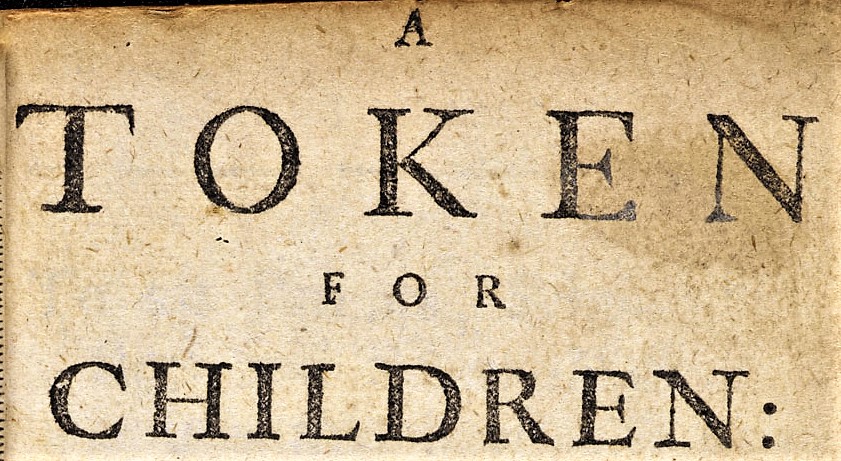
Tokenisation is one of those terms often heard in the same breath alongside such concepts as web 3.0, metaverse or blockchain. However, tokenisation is not just part of a vague concept, but is already being used in real business projects. Companies such as Taco Bell, Adidas and Polish Tenczynska Okowita are now experimenting with tokens.
Tokenisation is an expanding concept that is gaining in popularity and requires quite a bit of both technological knowledge and an understanding of how blockchain-based business projects work. In the flurry of information, it is easy to miss the key aspects. Among many articles on the subject, including those written by lawyers, there is surprisingly little information on the legal basis of tokenisation. One might even get the impression that tokens stored in blockchain are not subject to ordinary legal norms, but that some kind of virtual metaverse law applies to them.
However, tokenisation is really nothing new – it is an old concept that has been given new life thanks to distributed ledger technology (DLT).
In this article I discuss the legal basis for tokenisation under Polish law.
What is tokenisation?
Tokenisation is the creation of a representation of an asset, such as a thing or a right, in the form of a digital record. Such digital record may in particular take the form of a record within a database created using DLT. Let us first examine some examples of tokenisation which do not use DLT.
Tokenisation understood in this way is provided under, e.g. Article 8 of the Act on Bonds, which stipulates that a bond exists only in dematerialised form as an entry in a securities depository (maintained by the National Depository for Securities – KDPW). An entry in the KDPW is therefore a kind of token – it is a digital representation of a bond, i.e. a security, in which the issuer states that it is a debtor to the bond owner and undertakes to satisfy a specific performance. Of course, this is not blockchain-based tokenisation.
A similar view can be taken of the obligation to dematerialise shares in joint-stock companies provided under the provisions of the Commercial Companies Code, according to which shares are not in documentary form and are registered either in an electronic shareholder register or in the securities depository operated by the KDPW. Incidentally, these provisions provide that “The shareholder register should be maintained in electronic form, which may take the form of a distributed and decentralised database”. This is therefore another example of tokenisation, which may at the same time be a form of tokenisation using blockchain technology.
Finally, promissory notes can be seen as a specific token, in this case in the form of a paper document with strictly defined content and form.
Primary tokenisation
A characteristic feature of all of the above examples of tokenisation is that the token (e.g. an entry in the KDPW securities depository, an entry in the shareholder register) is inextricably linked to the represented asset. In other words, such a token incorporates the represented asset. Consequently, if we want to dispose of an asset represented by a token (e.g. a bond or a share), we only need to make the appropriate change in the database in which the tokens (entries) have been recorded.
These are examples of primary tokenisation, i.e. tokenisation that follows directly from the law, giving tokens (entries in the database) the meaning of equivalence with the asset that the token represents.
If the law provides for such primary tokenisation, the legal borders of tokenisation are obvious. Therefore, it is not possible to record a bond within, for example, blockchain in such a way that the bond is a bond within the meaning of Article 8 of the Act on Bonds. This is because the Act provides that the status of a bond has only a record in one specific database – the one maintained by the KDPW.
If, therefore, we are dealing with a token within a blockchain, then as long as we are unable to identify legal provisions which form the status of such a token as a digital record incorporating specific assets (in other words, from which the equivalence of the token and the asset it represents is apparent), we are not dealing with primary tokenisation, but with so-called secondary tokenisation.
Secondary tokenisation
Secondary tokenisation is based on representing a given asset by a token (i.e. a record within a database) on the basis of a corresponding liability construct. Thus, the status of a token in this case results mainly from the content of obligations that accompany the creation and trading of the token. The content of these obligations usually needs to be reconstructed by analysing the full legal and technological context associated with a given token.
It is easy to see that, in principle, almost all tokenisation projects are based on secondary tokenisation – the developers of a given project “agree” with token owners that a given token will represent a specific asset – a thing or a right. However, this also means that in most cases the acquisition of a token will not be equivalent to the acquisition of the asset that the token represents. The same is true for trading in tokens – the purchase of a token “representing” a property right to real estate will not allow the acquisition of that property. Typically, however, the purchaser of a token will be able to require the issuer of the token to perform an obligation it has incurred – for example, in the form of a specific performance. The purchaser of the token may also raise claims against the issuer arising, for example, from being misled as to the effect of the token acquisition.
In a nutshell, the following levels of legal analysis of a token, i.a. can be identified:
- the data which make up the token itself (they may, e.g., contain metadata with the content of the licence granted to the token holder to use certain content)
- the content of the smart contract used to create the tokens (a particular smart contract may include, e.g. the right of the original token holder to receive a commission on each resale of the token)
- information provided to potential token purchasers (announcements on the tokenisation project website, including rules and regulations, information on social media, announced plans regarding, e.g. benefits for token holders, organisation of events)
- the contractual terms and conditions of the trading platform used for the marketing or resale of the tokens
- provisions of law regarding obligations arising from information contained in the token, smart contract and communications originating from the token developer
- compliance with the relevant token standard (e.g. ERC-721 for NFT in Ethereum, other blockchain networks may have other standards); compliance allows, e.g., tokens to be traded using trading platforms
- the context of rights and obligations vis-à-vis other participants in a particular blockchain network (each distributed database operates under slightly different rules, which are established and modified by consensus)
What legislation do we apply?
Leaving aside tokenisation projects based on the DAO (Decentralised Autonomous Organisation) concept, which are based entirely on smart contracts, most tokens are associated with commitments made by specific individuals. These are not always traceable (which is not necessary, e.g., in the case of NFT), but most often we are able to identify a specific entity that makes specific commitments in connection with a tokenisation project. This means that we usually are able to identify the specific law and regulations applicable to a given token and the person behind a given tokenisation project.
In some countries, such as France, Luxemburg or Lichtenstein there are laws that allow for the primary tokenisation of specific assets. This means that in such countries it is possible to create tokens stored in the blockchain that actually represent the assets reflected in the token. Typically, however, tokenisation is secondary and based on the obligations of the token issuer.
Public promise and entitlement instruments
Many tokenisation projects are based on so-called utility tokens. Such tokens give the holder specific rights, e.g. the right to purchase goods at a discount or receive another benefit. An example of such a token may be a token giving the holder the right to participate in a specific event (e.g. to attend a VeeCon conference), thus being a ticket to the conference.
We usually assess such tokens in the light of the provisions of the Civil Code that may apply to publicly made commitments, among which the provisions on public promise (Article 919 et seq. of the Civil Code) and on entitlement instruments (Article 92115 of the Civil Code) come to the fore.
A public promise would be, for example, the promise of a so-called airdrop, i.e. a free additional token for each holder of previously issued tokens, or any other publicly made promise of a reward (in the form of an additional token, other benefit, discount, etc.) in exchange for the purchase of a token.
Many utility tokens will be entitlement instruments, i.e. a confirmation of a duty to provide a performance to the token holder. Under the Civil Code, the provisions on securities apply to entitlement instruments accordingly. In the case of tokens, which do not usually specify the person entitled by name, the provisions on bearer securities will apply. In practice, this means only that the transfer of rights to a token – as an entitlement instrument – requires the handover of the token.
The sale of tokens may also be conducted on the terms and conditions described in the rules and regulations accepted by the purchaser of the token. In such a case, a classic civil law contract will be concluded.
Of course, the list of laws that may apply to utility tokens is longer and depends on the specific project. Here I only intend to signal the basic legal constructions.
Security tokens
The freedom to assign a specific legal meaning to a token and to indicate the assets that the token is supposed to represent often leads to the emergence of tokenisation projects, in which the token is assigned a role that goes beyond a mere link to a civil law obligation. This may be the role of electronic money, a security, or a title to participate in some investment.
The problem is that this type of activity is subject to quite strict legal regulations, which may include the obligation to register or obtain a relevant permit, numerous formal information obligations towards buyers, and may even regulate this type of activity for certain types of entities subject to special supervision. Legal regulations may also impose a specific legal form for certain activities, which cannot be observed in token transactions.
The mere promise to treat the token holder as if he or she were, for example, a shareholder in a company or a co-owner of real estate is often not enough to sidestep the risk of allegations that such a tokenisation project constitutes a circumvention of the law or a straightforward violation of certain provisions relating to investment activity.
Summary
When one reads descriptions of tokenisation projects, it usually takes a long time to understand them. Complicated tokenomics (i.e. rules governing the issuance and trading of tokens) and numerous unfamiliar-sounding terms are often designed to create a smokescreen that makes it difficult to figure out what the project is really all about. The EU regulation on crypto markets (when it comes into force) will change a lot in this regard.
However, the fundamentals will remain the same. We need to distinguish between primary and secondary tokenisation, and in the latter case, we need to identify the obligations associated with the token and assess them against the relevant laws. Simply storing tokens in a blockchain does not move them into the metaverse and does not make them immune from the application of ordinary, common law.



 Tokenizacja – nowe życie starej koncepcji
Tokenizacja – nowe życie starej koncepcji